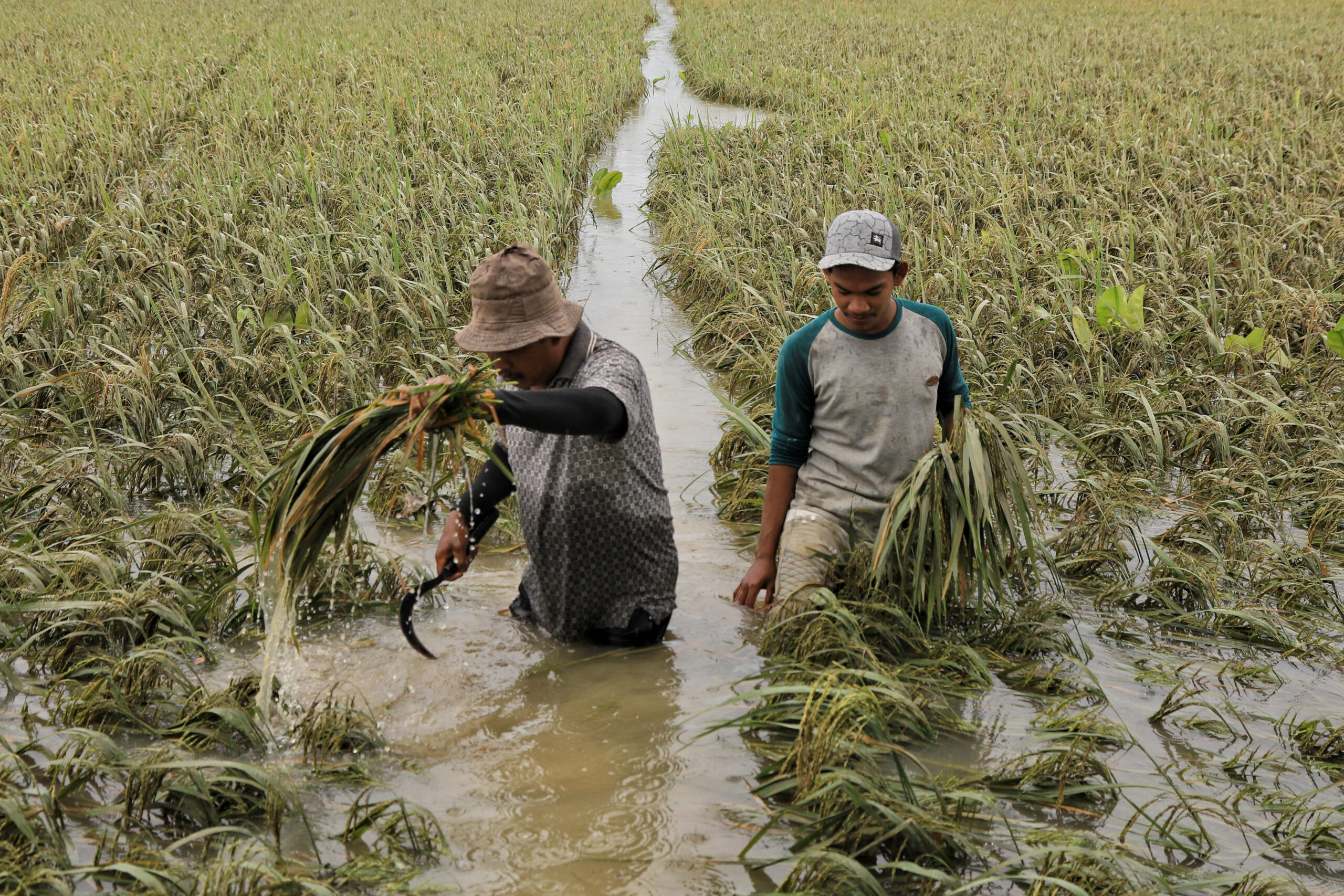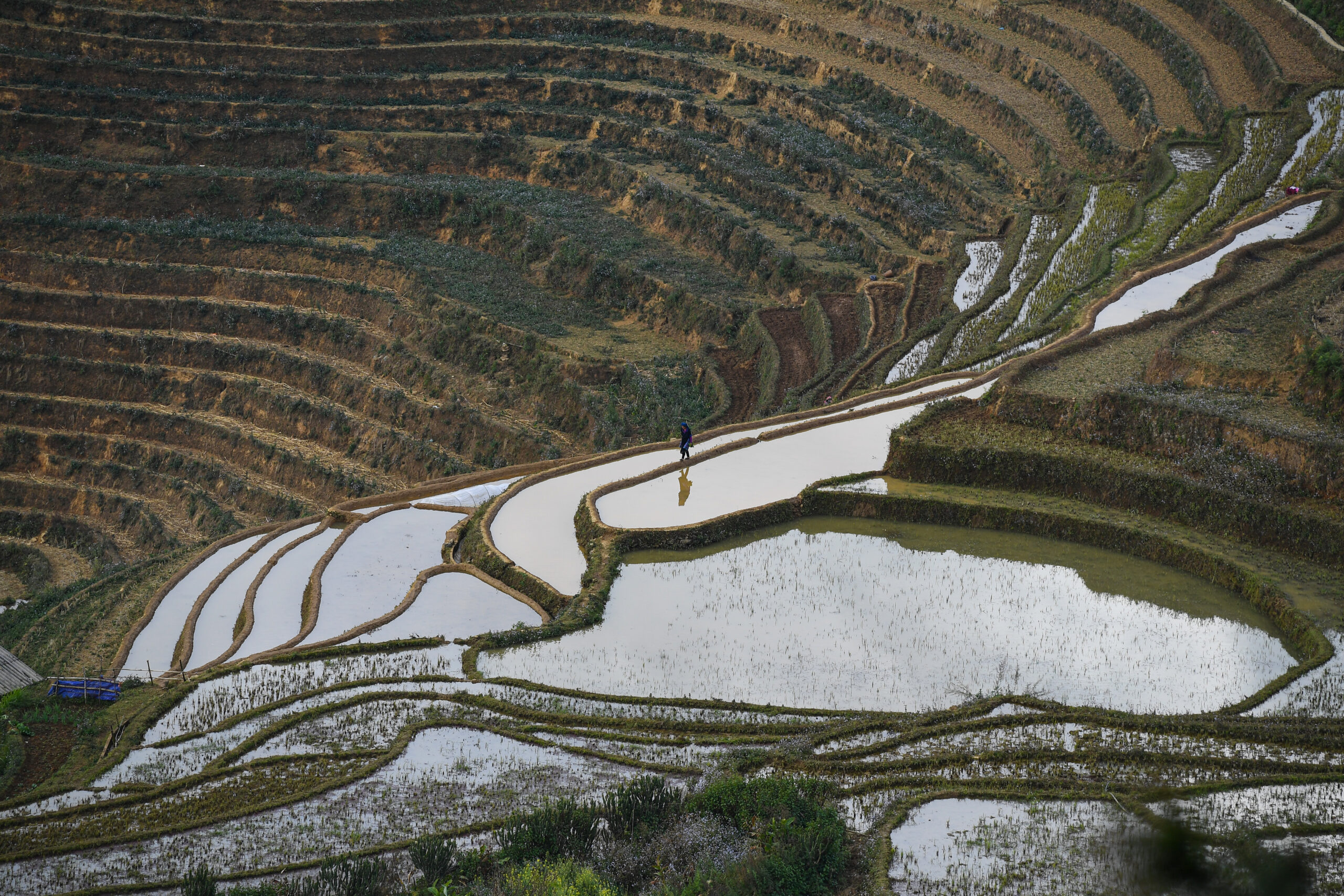The balance of food sustainability and national security of Southeast Asia hangs on a tiny white grain.
Rice is the daily staple of 3.5 billion people globally, providing about one-fifth of their calorie needs. It is the main food crop in Asia, which includes the world’s two largest producers, China and India, and the three largest exporters, India, Vietnam and Thailand.
But as rising demand clashes with environmental threats, Southeast Asia’s rice bowl economy is struggling to stay sustainable.
Southeast Asia accounts for 40% of the world’s rice exports and rice shortages resulting from lack of supply and price hikes have in the past led to civil disobedience in countries such as Indonesia and The Philippines.
Yet the amount of rice available for export trade is among the lowest of the food staples, commonly less than 10% of global production each year, mainly because most rice is eaten where it is produced. Any shortfall in production impacts the rice security of millions.
While increased rice yield is critical for Southeast Asia’s food security, growing concerns over the environmental impact of ramping up production is creating a dilemma over the economics of the tiny seed.
There has been a recent chorus of concerns about the challenges facing the adequacy of rice production in Asia, ranging from short-term climate effects to longer-term yield and production declines.
The United Nations Food and Agriculture Organization has warned rice production must increase by 5 million tonnes per year to keep up with demand from increasing populations but continuing reduction of rice lands due to industrial and urbanisation use and declining freshwater resources and farm labour pose hurdles to any planned increase in rice production.
Disrupted supply and supply chains have led to inflation of the rice market. In this millennium, the FAO Rice Price Index, a measure of the monthly change in international rice prices, doubled between 2000 and 2020.
As rice is the main source of calories for low-income households, any price increase could have severe trickle-down effects on nutrition and health, in particular for children. Further rice price rises have been predicted for the next two years. High domestic wheat prices in India may also drive consumers to turn towards rice, driving up demand. In Southeast Asia where rice is the preferred staple, high rice prices will force poorer households to eat less.

Rice warnings
A March report warned Southeast Asia’s ‘rice bowl’ status is under severe threat because of large yield gaps when farmers are only able to obtain about half the yields they should get from their seeds.
The study warns of the urgency for Southeast Asia rice producers to take action to narrow yield gaps so the region remains a major rice bowl for import-dependent countries like Singapore, Indonesia and the Philippines.
After a few decades of steady increase in Southeast Asia’s average rice yield, there is now evidence of yield stagnation in four of the six major rice-producing countries in the region: Indonesia, Myanmar, Thailand and Vietnam. Irrigated rice-area expansion is unlikely due to lack of investments in infrastructure and environmental concerns.
Drought and floods have severe consequences on rice production in countries such as Thailand and China. The Intergovernmental Panel on Climate Change reported rising global temperatures will increase the likelihood of heatwaves and floods in Asia and could substantially affect land and water resources for rice production.
It is not just human rice consumption rocking the balance of the rice economy. Rice futures recently have traded at an all-time high amid strong demand in the animal feed industry.
Since Russia’s February invasion of Ukraine stopped grain shipments from both countries, rice has become a cheap alternative to wheat and corn, especially in China, the world’s largest feed market. The same response will likely be seen in other countries, including those in Southeast Asia, which rear chicken, hogs and fish.

Rice as a GHG source
Building up the rice bounty comes with environmental costs. Areas of high rice production are simultaneously areas of high greenhouse gas (GHG) emissions. Growing more rice will inevitably lead to more methane and nitrous oxide emissions, two important GHGs contributing to climate change.
Agriculture is generally acknowledged as a significant source of GHG emissions, contributing around 18.4% of the global total, mainly through cattle farming and rice cultivation. During production of 1 kilogram (2.2 pounds) of rice grain, a paddy field may contribute 100 grams (3.5 ounces) of methane, a key GHG with a global warming potential 25 times higher than carbon dioxide.
Worldwide, rice is grown either in paddy fields or under dryland conditions. Most of Southeast Asia’s paddy fields are located in the irrigated lowlands, with the rice plants submerged during most of the growing season. This type of rice farming produces most of the methane emissions, estimated to be 78% of all methane from rice growing.
Potential silver linings
The rice conundrum is a complex mix of issues, but not all gloom and doom. While climate change and supply chain disruptions may increase in intensity in the intervening years, the Covid-19 pandemic has re-focussed the world’s attention on food insecurity as an existential threat.
The role of ‘disruptive technologies’ in safeguarding food production will be key. Biotechnology is using genetic modification and gene editing to provide farmers with better crop varieties and animal breeds to tolerate climate change and pests and inherently yield more.
Digital technologies have been used to improve smallholder rice farming in countries including China, India and the Philippines with the use of drones, sensors and the ‘Internet of Things’: a network of software and other technologies connecting physical objects and exchanging data online.
But these will have to be accompanied by supportive public sector policies, sufficient private investment and an environment incentivising farmers to produce more.
Although rice lands are declining all over Asia, several developments offer hope that new farming methods may partially make up for the loss of land. Growing rice in the sea using salt-tolerant varieties is an exciting new technology with potential to increase rice supply and decrease methane emissions.
Even in urban areas like Singapore, pilot trials have been conducted to show rice can be successfully grown and harvested in vertical farms adjoining tall, residential buildings. The combined increase in rice availability from developing new rice-growing environments and using nascent varieties assisted by digital technology are among the many integrated approaches to address the rice conundrum.
Rice investments historically have been viewed as a public sector responsibility with governments often using foreign direct investments to build infrastructure like irrigation systems. Recently, however, partly accelerated by the Covid-19 pandemic, private equity has poured into the development of digital technologies such as ‘agtech’ and ‘fintech’ to improve rice farming productivity and profitability.
Further private investment will help rice farmers reduce their carbon footprint and derive credit from their efforts, ultimately improving the attractiveness of rice farming as a profitable means of livelihood.
Paul Teng is an adjunct senior fellow in the S. Rajaratnam School of International Studies at Nanyang Technological University Singapore.


